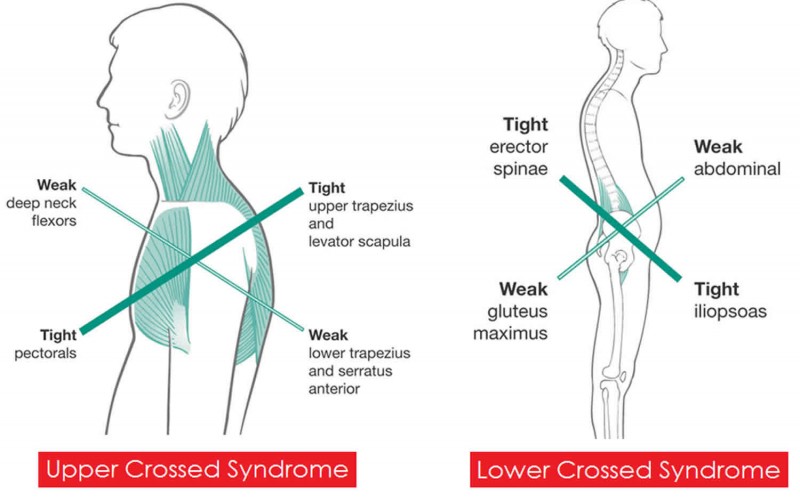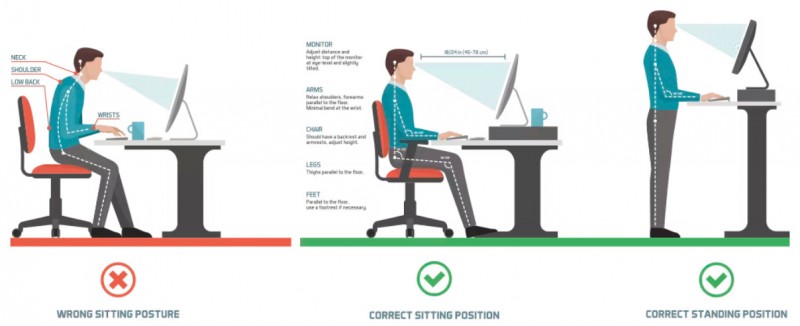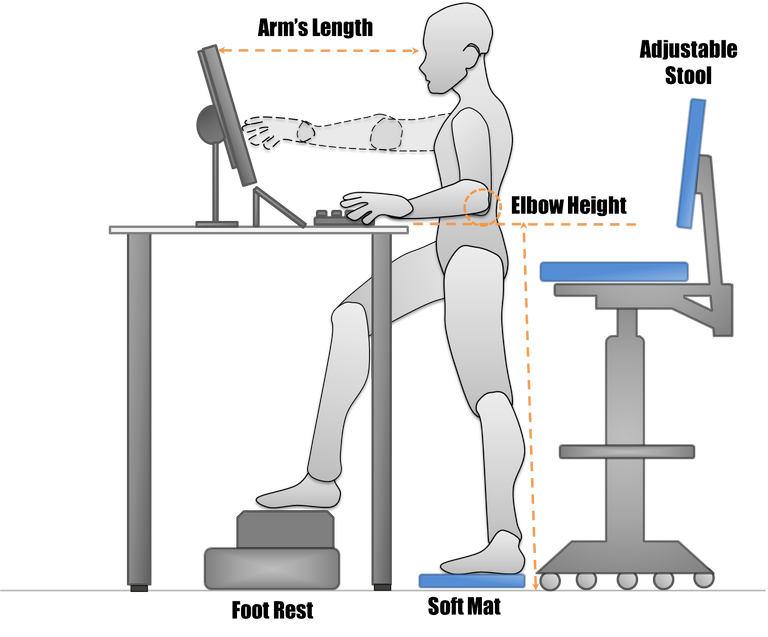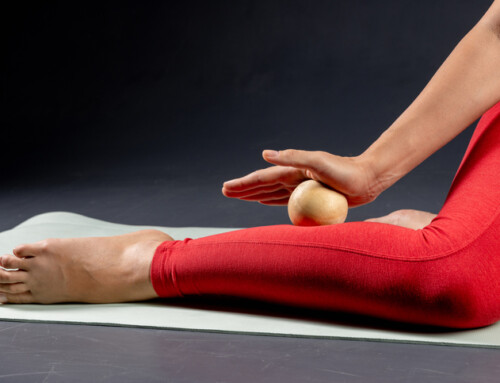By: Caroline Cuda, SPT
What is “Good Posture” and Why is it Important?
Posture involves the position and alignment of all parts of the body when sitting or standing. Some “asymmetry” is considered to be normal. It is

Image courtesy of https://healthjade.net/cross-syndrome/
extremely important to ensure your office set up is ergonomically efficient in order to promote using the right muscles and to keep the bones and joints in good alignment.
The ideal posture for the workplace is the one that places the least amount of strain on your muscles and ligaments. Sitting or standing for extended periods of time with poor posture can take a toll on your body, and may cause limitations such as some muscles becoming tight and others becoming weak.
Workstation Recommendations

Image courtesy of https://rocpt-ergo.com/common-ergonomic-tips/
Having good posture and an optimal workplace set up is essential to minimize the risk of muscle strains, back aches and pains, and overuse problems. Here are some tips to ensure your office set up is adjusted appropriately.
- Establish positions to provide relief
- Use a sit-to-stand desk – try a sit to stand desk to avoid prolonged and repetitive positions
- Stretch out – roll your shoulders back, turn your head from side to side often
- Move around – try to get up and move around at least once every hour; take a short walk on breaks
- Keyboard and monitor heights
- The keyboard – should be set up so your arms are at a 90 degree angle to avoid extending your arms too far forward or raising your shoulders too far up
- The computer monitor – should be directly at eye level about 20-26 inches away to avoid causing strain on the neck and shoulders
- Recommendations for sitting
- Adjustable chair – to provide support and pressure relief
- Chair height: adjust height so feet touch the floor
- Arm rests: adjust to a position that allows arms to relax parallel to the floor
- Lumbar back support – to provide support for the natural curve of the spine
- Wrist rest – to keep hands in line with the forearms to avoid too much twisting of the wrists
-
Image courtesy of https://www.workhealthonsite.com.au/workstation-set-up/
Foot rest – to provide comfort and reduce stress
- Keep enough space between your thighs and the desk – to keep knees in alignment with your hips and distribute pressure equally
- Recommendations for standing
- Padding under the feet – this will help to provide comfort and reduce stress
- Avoid static positions – try weight shifting often
- Wrist rest – keep hands in line with the forearms to avoid too much twisting of the wrists
- Foot rest – to allow for changes in positioning
How Can Physical Therapy Help Good Posture?
- Correcting muscle imbalances – by strengthening weak muscles and stretching tight muscles
- Stabilization exercises – improving core strength
- Establishing optimal movement patterns
- Establishing an optimal work set up
Good posture and ergonomics is an important part of your overall good health. Doctors Andrew J Gaetano, PT, DPT, OCS, CSCS and Evan J Marsh, PT, DPT can provide support and treatment for poor posture issues. Call 518-289-5242 to schedule your appointment at any one of three Capital Area Physical Therapy & Wellness clinics in the NY Capital Region.







